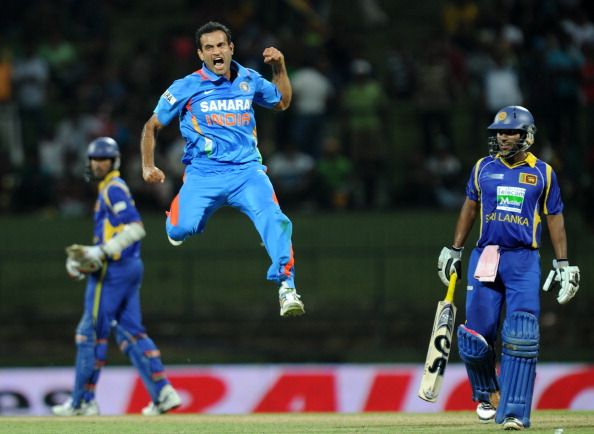
Top 10 Indian cricketers who could not realise their full potential
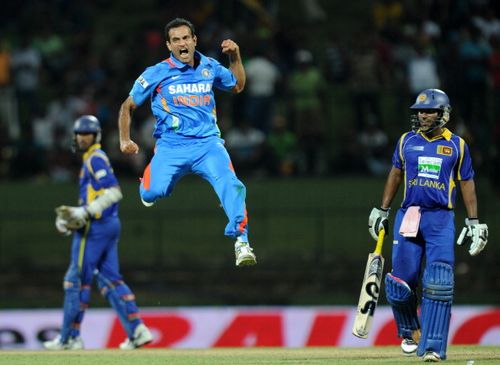
Over the last two and a half decades, Indian cricket has seen it all; the 90s were perhaps the darkest years in modern cricket history where India won only one away Test, that too against Sri Lanka, and was then dragged into the quagmire of match-fixing towards the end of the millennium. 2000-2010 was a definite high, with India registering several overseas victories under the able captaincy of Sourav Ganguly, and later Anil Kumble.
The team has experienced mixed fortunes post-2010. While they have lifted the World Cup and the Champions Trophy, they have also embarrassingly lost a number of Test matches on foreign soil. This article looks at some of the players during this period who possessed great potential but have been unable to realize it, for a variety of reasons. We look at 10 players that did not realise their full potential at the national level.
1. Hrishikesh Kanitkar
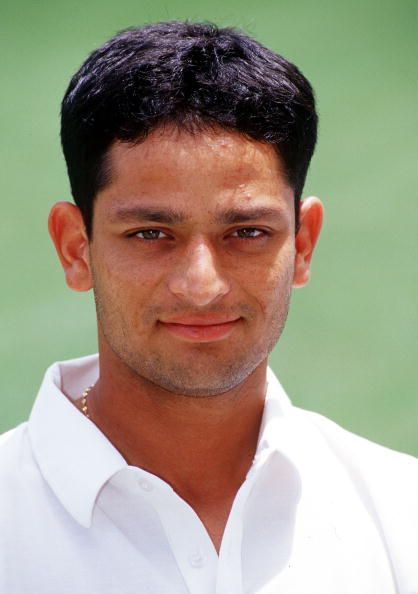
Hrishikesh Kanitkar shot into prominence in his 3rd One Day International: not with a century or a 5-wicket-haul, but with a score of 11 not out; avid followers of the game will recall the 1998 Independence Cup final at Dhaka (a triangular involving India, Pakistan and Bangladesh) where, in near darkness, with India requiring 3 runs off 2 balls, young Kanitkar swung an in-form Saqlain Mushtaq to the mid-wicket boundary for 4 runs, sealing a famous victory.
In his very next ODI, against Australia in Kochi, Kanitkar scored 57, proving that he could not only keep his cool in adverse conditions but also had the ability to make runs against quality bowlers like Shane Warne. Given that he could also roll his arm over in the middle-overs, India’s quest for an all-rounder seemed over, and he was being hailed as the next potential superstar of Indian cricket.
Unfortunately, that turned out to be his only half-century; though he continued playing some useful innings over the next two years, his last international ODI was at Perth versus Australia in January 2000. His Test career was even briefer; he played a couple of Tests against Australia in the 1999-00 series, and, though he managed a decent innings of 45 in Melbourne, he was discarded after the January 2000 Test at Sydney, and not selected again.
Though Kanitkar has not played international cricket for nearly 15 years now, he was impressive in the very conditions Indian batsmen are currently toiling in; in 2006, he played for the Brentwood Cricket Club in Essex and scored over a 1000 runs that season at an average of approximately 76. His leadership acumen also came to the fore during the 2010-11 domestic season when he captained Rajasthan to their maiden Ranji trophy victory.
2. Sadagoppan Ramesh
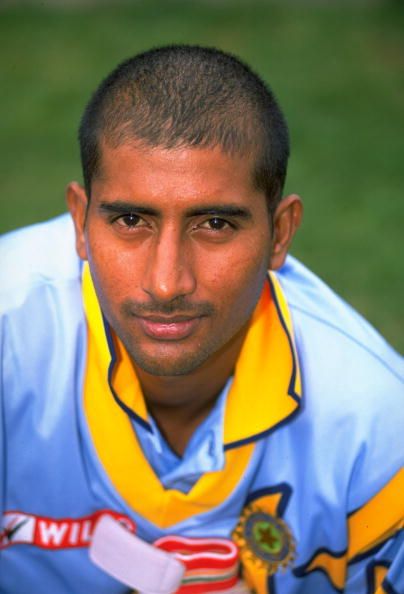
Though he had a fair run in both Tests and ODIs, it was in the longer format that Sadagoppan Ramesh exuded strong potential. Ramesh made his presence felt in his very second Test match, against Pakistan in February 1999 at the Feroz Shah Kotla, Delhi; the match is remembered not for him, but for Anil Kumble, who got all 10 wickets in the second innings. The performance was undoubtedly special, as the leg-spinner became only the second person after Jim Laker to take all 10 wickets in an innings; however, it relegated to the background Ramesh’s knocks of 60 and 96 against one of the strongest Pakistan bowling attacks I have ever seen: Wasim Akram, Waqar Younis, Saqlain Mushtaq and Mushtaq Ahmed.
Had it not been for the once-in-a-decade performance by Kumble, Ramesh would have walked away with the Man-of-the-Match award. He continued performing impressively in Tests against Sri Lanka and New Zealand, and his batting average after his first 7 Test matches was nearly 56. He suffered a setback during the 1999-00 Australian tour when a Brett Lee delivery injured him and put him out of action for a while. He returned to international Test cricket towards the end of the year but did not seem the same player again; he got several starts but did not make any big scores. Ramesh played his final Test in August 2001, and Virender Sehwag played his first Test in November 2001; no wonder the door never opened again for Ramesh.
3. Sanjay Manjrekar
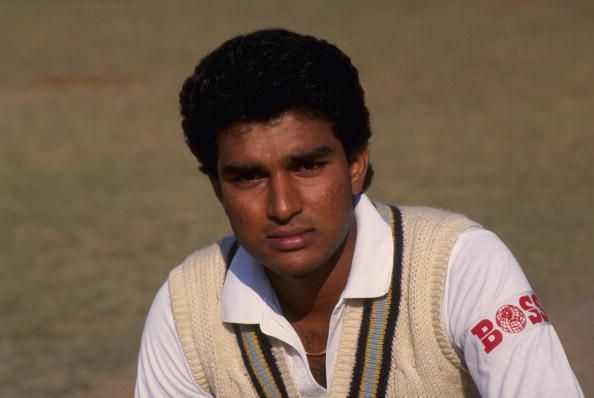
Somewhat like Ramesh, though having played as many as 74 ODI matches, it was in the Test arena that Sanjay Manjrekar was considered special. His obsession with technical perfection resulted in a strike-rate of only 64.3 in ODIs, which, even in those days, was not particularly encouraging. In Tests, however, his technical mettle drew comparisons with the great Sunil Gavaskar, and not unduly so. In only his third Test, facing up to the fearsome West Indies pace quartet of Malcolm Marshall, Curtly Ambrose, Courtney Walsh and Ian Bishop, in their own backyard at Bridgetown in April 1989, Manjrekar scored his first century.
India’s tour of Pakistan later that year established him as the next best thing to happen to Indian Test cricket when he made scores of 113*, 76, 83, 218 and 72 against a bowling line-up that included Wasim Akram, Waqar Younis, Imran Khan and Abdul Qadir. He failed during the New Zealand tour that was up next, and, though he bounced back with a better performance in the 1990 England tour, he could never again recreate the 1989 magic.
In his own words, his form declined after 1992-93; though he continued to contribute, his performances were a shadow of his initial years. Given his potential, he was persisted with till 1996 when injury and the simultaneous rise of two Indian greats Rahul Dravid and Sourav Ganguly – both of whom made their debut together the same year in England – drew down the curtains on his career.
4. Amol Muzumdar
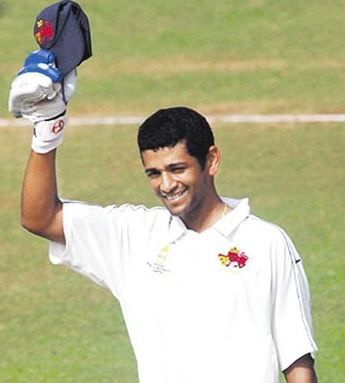
I will not be surprised if many people have not come across this name, given that he has not played a single international match. Avid cricket followers and Mumbaikars will vouch for the fact that there was a time that Amol Muzumdar was being touted as the next Sachin Tendulkar, with his penchant for scoring tons of runs in domestic cricket. Mazumdar has scored more than 11,000 runs in First-class cricket, behind only to his Mumbai team-mate Wasim Jaffer.
On his Ranji trophy debut, under Ravi Shastri’s captaincy, against Haryana in the 1993-94 season, Mazumdar cracked 260, which continues to be the world record for the highest score made on a first-class debut. Mazumdar was also padded up and waiting to bat during Sachin Tendulkar and Vinod Kambli’s epic 664-run partnership for Shardashram Vidyamandir school during the 1988 Harris Shield trophy. Mazumdar’s wait then was perhaps symbolic of his never-ending wait to get into the Indian cricket team. Despite consistently scoring runs throughout his domestic career, he never got a call-up to represent the country in either format.
He did not exactly sizzle in List A cricket, so, if selected, Test cricket would have been his calling. Perhaps, the only thing that went against him was that, at the peak of his form, there was no place in the Indian middle-order that included Rahul Dravid, Sachin Tendulkar, Ganguly and VVS Laxman.
5. Munaf Patel
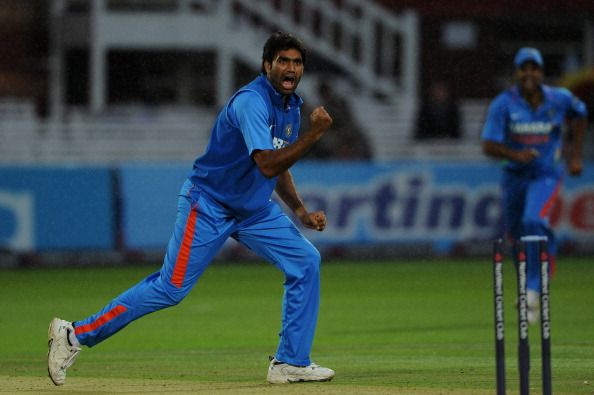
Munaf Patel is one of the rare cricketers who shot into limelight even before he had bowled a single ball in First-class cricket. Noticed by Kiran More in early 2003, and sent to the MRF Pace Foundation, he caught the eye of none other than Sachin Tendulkar who recommended him to the Mumbai Cricket Association. Hailed as the fastest bowler in the country at the time, his services were sought after by Gujarat, Baroda and Mumbai; he finally chose Mumbai, possibly influenced by the maestro.
Even at that early stage, he was injury-prone, and it was only in March 2006 that he earned a call-up to the national side for the 2nd Test against England. He was extremely impressive in his debut match, particularly in the second innings, where he demolished the English middle and lower order with a barrage of reverse-swinging yorkers at close to 150kmph, collecting four wickets in the innings and seven wickets in the match.
He continued to impress with his pace in the next few Test matches and ODIs but was sidelined after a poor show in South Africa in 2007; he particularly received flak for declaring himself fit when he wasn’t, highlighted by the fact that he bowled only 1 out of India’s 64.1 in South Africa’s second innings. Over the next few years, he suffered from a dramatic drop in pace, seemingly rebranding himself as a line and length bowler as opposed to the tearaway fast bowler he used to be. He enjoyed some level of success in ODIs and was the third-highest wicket-taker for India in the 2011 World Cup, but the promise with which he exploded on the Indian cricketing scene has not been realized. With none of the IPL franchises selecting him for the 2014 edition, the future does not look too bright for Munaf.
6. Mohammad Kaif
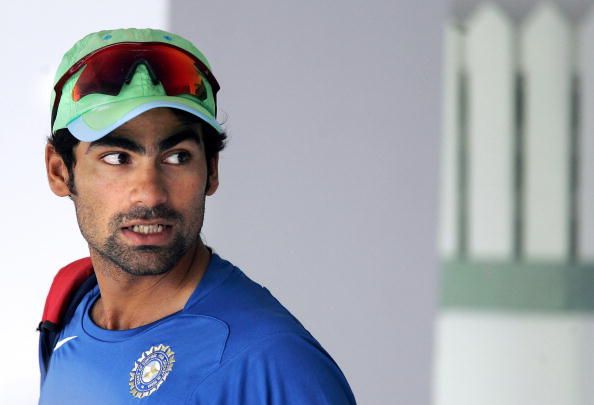
In a situation reverse to that of Ramesh and Manjrekar, Mohammad Kaif, despite a few Test innings, one of which was the majestic 148* against West Indies at St. Lucia, was always considered an ODI specialist. Unlike some of the other players on this list, Kaif did not shoot to fame immediately. After his ODI debut in January 2002, he played about 35 innings before playing a match-winning knock of 87* against England in the Natwest Trophy final in July 2002.
Till that day, and for a better part of that innings, he was considered a good support player. Still, the Natwest final established him as a batsman capable of pacing his innings splendidly and also showcased his power-hitting and excellent running between the wickets. His next ODI innings produced the first century of his ODI career, against Zimbabwe, and his reputation as an excellent finisher was further enhanced. Over the next four years, Kaif knit together several crucial innings, which included several 50s and a century against New Zealand in Harare, 2005.
Except for the Natwest final, flamboyance was not a characteristic usually associated with Kaif; this made him less noticeable than some of his more dashing peers like Yuvraj Singh. This stodgy positioning, combined with the meteoric rise of MS Dhoni as a finisher saw him play his last ODI in November 2006. For someone who possessed excellent cricketing acumen, had an entire repertoire of strokes, and was an outstanding fielder, Kaif achieved relatively little.
7. Shanthakumaran Sreesanth
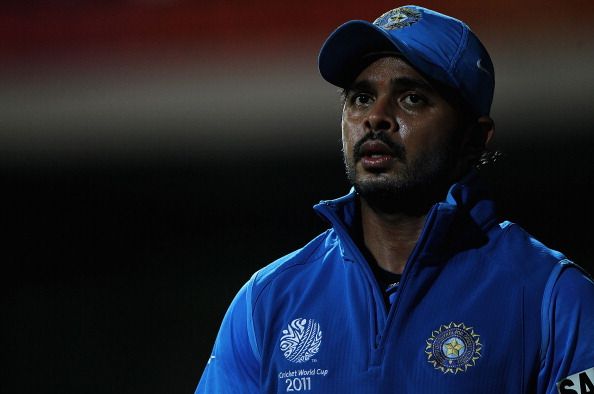
My earliest memory of Sreesanth, the quintessential ‘bad boy’ of Indian cricket, is of him dismissing Tendulkar in the 2005 NPK Salve Challenger Trophy. I read much later that controversy did not evade him even that that stage; during that match, he allegedly sledged Tendulkar to the extent where the maestro told him not to come anywhere near him. Sreesanth emerged the leading wicket-taker in that edition of the Challenger Trophy and was selected for the upcoming ODI series against Sri Lanka.
Consistent performances in the shorter format earned him a selection for the home Test series against England. At the same time, he impressed from the onset, his breakthrough performance came during the 2006 India tour of South Africa. In the first Test match at Johannesburg, maintaining a perfect wrist position and swinging the ball both ways at good pace, Sreesanth grabbed five wickets to skittle South Africa for 84 runs in their first innings. South Africa could not recover, and India went on to register their first-ever Test victory on South African soil, Sreesanth winning the MoM award for his match haul of 8 wickets.
He went onto take ten more wickets in the series, winning accolades from cricketing greats around the world. Though plagued by injuries and inconsistency in the years that followed, when on song, he could make the ball talk and was soon hailed as the second-best swing bowler in the country behind Zaheer Khan. However, his on- and off-field antics and frequent brushes with controversy significantly affected his career. He even made captain cool MS Dhoni lose his cool; in 2011, the Indian captain commented that Sreesanth should irritate opposition players, and not his own. Sreesanth was involved in multiple controversies, from the slapgate scandal during IPL 2008 to various disciplinary misdemeanours, culminating in being the prime accused in a spot-fixing scandal during IPL 2013, which resulted in the BCCI slapping a life ban on him.
8. Ajit Agarkar
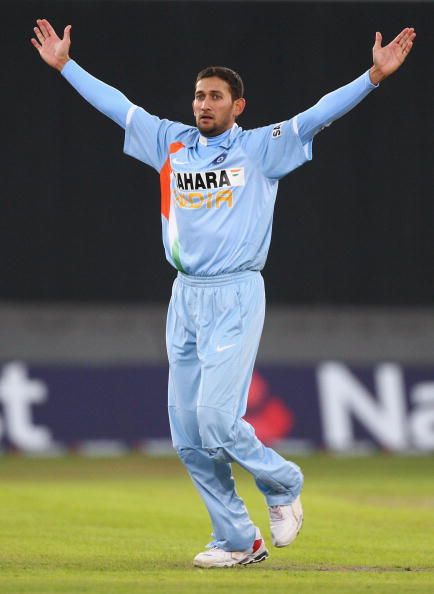
I could be chastised for including someone who has played nearly 200 ODIs and secured close to 300 wickets at a very acceptable average of 27.9, on this list, that too so high up; however, having followed Ajit Agarkar’s career from even before his international debut, I am convinced that the man has achieved nowhere close to the potential he kept exuding. In early 1998, sports magazines flashed news about an impressive all-rounder on the India A tour to Pakistan. I kept a track of the series and noticed that Agarkar picked up wickets and scored runs heavily in almost every match.
He took 23 wickets and made buckets of runs, including a century, resulting in a landmark victory for the ‘A’ side. He made his ODI debut against Australia at Kochi later that year. He established his pedigree by becoming the then fastest man to 50 ODI wickets (in 23 ODIs), breaking the great Dennis Lillie’s record. The 1999-00 Australia tour, which had proven to be a low for a couple of other players on this list, included a bizarre run of seven consecutive ducks for Agarkar, which earned him the nickname ‘Bombay Duck’ and would undoubtedly have impacted his confidence.
His redemption came during the England tour of 2002, when he scored a century at Lord’s, where most Indian batsmen failed. In ODIs, he played several crucial knocks lower down the order, including a 21-ball half-century against Zimbabwe, which remains the fastest ODI half-century by an Indian batsman. Though hailed more as an ODI specialist, his finest bowling moment came during the 2003-04 Australian tour at the Adelaide Test where his six wickets in the Australian second innings laid the platform for a famous Indian victory.
Despite his small frame, he managed to extract significant pace and bounce even on tepid Indian pitches. His ability to bowl accurate yorkers saw him forge a great death-bowling partnership with Zaheer Khan in the early 2000s. While his economy rate was always on the higher side, his inconsistency and tendency to keep getting hit once batsmen started going after him proved to be his bane. He kept getting in and out of the side, but his final career statistics do not do justice to the talent the man possessed.
9. Irfan Pathan

Irfan Pathan is an exception to the rule I have generally followed in compiling this list, because, being below 30 years of age and fairly active in domestic and IPL tournaments, the door is not yet closed on him. Without a doubt, Irfan, in his prime, was the second-best seaming all-rounder India ever possessed, behind the great Kapil Dev. Pathan burst onto the scene during the 2003-04 tour of Australia, when, in only his second Test, he castled Adam Gilchrist with an unplayable yorker. What was particularly impressive was the fact that the youngster combined raw pace in excess of 140kmph with a calm demeanour that marked him out as special.
He impressed one and all with his pace and control during the Pakistan tour of 2004, where, in partnership with another youngster, Lakshmipathy Balaji, consistently troubled Pakistani batsmen. In what turned out be a decisive turning point in his career, coach Greg Chappell, keen on ‘discovering’ the batsman in him, regularly promoted him to no.3 in the batting order; while he did not disappoint in terms of his batting scores, he inexplicably lost his bowling mojo. He lost his ability to swing the ball and, suddenly, was bowling in the 120s as opposed to the 140s a while back.
He was axed from the team after the 2007 World Cup debacle; though he made an impressive return, in the inaugural T20 World Cup, by then he was more of a containing bowler than an aggressive one. He continued getting opportunities till the next year and played an all-round role in helping India win the 2008 Adelaide Test match; he only played two more Tests, the last being against South Africa in Ahmedabad in April 2008. He lasted longer in ODIs but has been in and out of the Indian cricket team owing to a mix of inconsistent form and frequent injuries. In hindsight, he comes across as an example of gross mismanagement of talent of the highest order, achieving only a shade of his potential.
10. Vinod Kambli
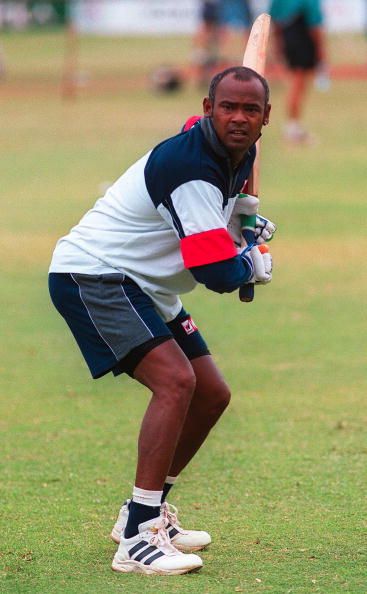
Not many cricketers can claim to be referred to as “more talented than Sachin Tendulkar”, but that was precisely the tag Vinod Kambli carried with him on Test debut v England in January 1993. After his first 8 Tests, he proved why exactly that tag applied to him; he had equalled Don Bradman and Wally Hammond’s record of scoring double centuries in back-to-back Tests and had a Bradman-esque batting average of 99.75. His form spiralled over the next two years, and that, combined with several allegations of indiscipline and off-field controversies, swiftly drew the curtain down over his Test career in 1995.
Even after taking into account his loss in form, he ended his Test career with a batting average of 54.2; I am not sure how many other cricketers ended their Test career after only 17 matches with an average like that. It did not help that, as a middle-order batsman, he had to dislodge one of the ‘Big 4’ post-1996, something he could never manage to do. His ODI career, though much more mediocre, lasted longer and ended with a whimper in 2000. Kambli dabbled in multiple domains post his international career, including politics, television and even movies, none with much success. He stoked controversy in 2009, when on a reality show, he voiced his discontent against Tendulkar, later claiming that India’s 1996 World Cup semi-final match against Sri Lanka was fixed. Having retired from all forms of cricket in 2011, Kambli remains the biggest example of ‘what could have been’ in Indian cricket.